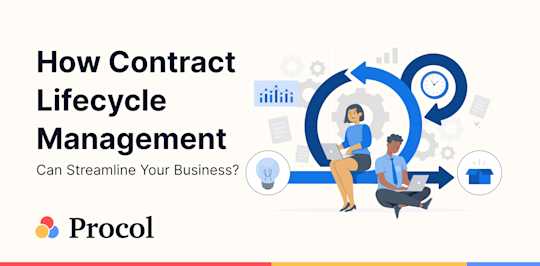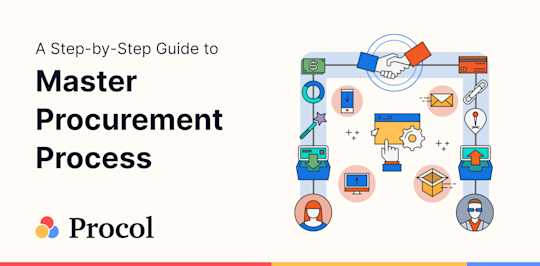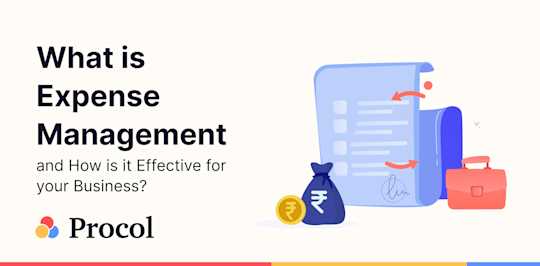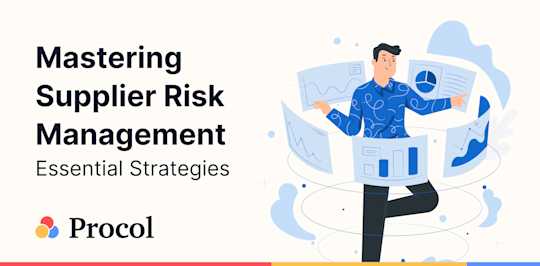Direct vs Indirect Procurement: How Stakeholders can Revamp Procurement Strategies
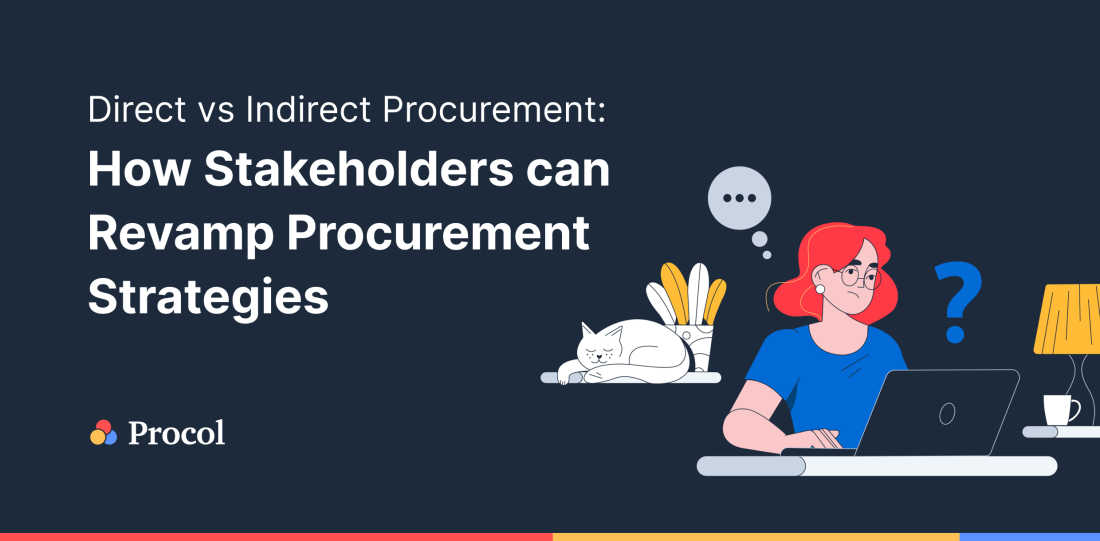
To analyse the performance of a company’s procurement operations, procurement teams often utilise multiple functions such as inventory management, PO processing, contract management, and supplier management, among others.
When it comes to analysing procurement spends, every purchase made by the procurement teams can be divided into two broad categories - direct and indirect spend. These purchases are magically related and differentiated on the basis of utility and budget. This helps the company to ensure a steady cash flow, manage inventory, and build lasting supplier relationships based on the frequency of POs.
What is Direct Procurement?
Direct procurement refers to the process of acquiring goods/services related to the core business activity of a company. Ranging from metals to plastic to paper products, direct procurement is instrumental in the making of finished goods that reach their end customers with further packaging and processing.
For example, if a company manufactures finished fabrics, their direct procurement would include textiles and cloth materials which would be processed and sewed before reaching the market. Direct procurement is mostly prominent in physical manufacturing industries who utilise it for making tangible products and generating revenue. Most businesses are highly centred on direct procurement as it determines the quality, consumer experience, and availability, of the final product and is proportional to revenue and profit streams.
Goals of Direct Procurement
For some businesses, the primary aim of managing direct procurement is to optimise associated costs. To source larger quantities frequently, companies often look for volume discounts from vendors apart from other ways to cut costs including labour charges and equipment charges. Mentioned-below are some of the common goals related to direct procurement.
- Trimming waste - Streamlining manufacturing process to reduce waste generated or finding ways to manufacture products using fewer materials can vastly help in reducing direct procurement spend.
- Inventory management - Unsold inventory can lead to businesses losing money in the longer run or selling products at a discounted price. Direct procurement needs to be directly proportional to the current inventory and storage capacity for businesses to timely manufacture products and sell within a set period.
- Improved sustainability - With increased awareness towards sustainable goals, companies are paying attention to their direct procurement and how their partnership with vendors can put them in the frontline of environmental efforts.
What is Indirect Procurement?
Indirect procurement refers to the process of sourcing resources that support a company’s operations. These goods/services are not related to any direct input into the final product that is released in the market, instead play a supporting role to ensure smooth manufacture of direct materials.
For example, for a software company, indirect procurement would include building maintenance, office equipment such as printers and laptops, SaaS subscriptions such as Atlassian, HubSpot, or Slack, HR functions such as training and development of employees, office stationery, additional resources such as books and posters, travel expenses, and more.
Indirect procurement garners less visibility and lesser investment resources as compared to direct procurement. A recent McKinsey survey highlighted that since indirect spends are fragmented across locations, business units, and categories, it becomes hard for procurement teams to identify and keep track of such expenses. As a result, most companies lack the effective mechanisms to monitor such categories and reduce the negative impact on the company’s financial health.
Challenges in Indirect Procurement
A research report by Proxima highlighted that over 80% organisations advised that indirect procurement usually delivers against expectations. The study also found that the current perception of indirect procurement is more inclined towards tactical support function than a strategic business partner. Mentioned-below are some of the roadblocks that hinder the smooth functioning of indirect procurement.
- Involvement of multiple stakeholders and commodity groups
Since indirect procurement influences the day-to-day operations of stakeholders, these expenditures are often decentralised amongst multiple internal departments such as HR, marketing, finance, accounts, technology, support staff, and more. It becomes a challenge to track procurement activity of multiple commodities across categories with many internal teams involved.
- Maverick spending and lack of supplier performance
Since most teams and stakeholders procure indirect materials, researchers have observed a rampant, irregular buying behaviour from business units. This could be due to non-existent, dedicated procurement teams and lack of mandatory spend policies. These factors lead to complex supplier relationships, obscure supplier performance, and increased procurement risks.
- Missed savings opportunities
Lack of transparency and accountability of indirect procurement leads to complexity in maintaining indirect spend data. Compared to direct procurement where transactions hold high monetary value, indirect procurement often gets lost and untracked due to low transactional volume and monetary value. This makes it impossible for procurement teams to track spend activity across categories and devise strategies for spend optimisation.
Direct Procurement vs Indirect Procurement

Both direct and indirect procurement differ in the way they operate and function they address. Apart from the stark difference of direct procurement focusing on securing raw materials to be delivered to customers and indirect procurement dealing with sourcing day-to-day goods, there’s a wide difference in how they operate. Here are some of the differences between direct procurement and indirect procurement:
- Supplier relationship management
Direct procurement contributes directly to a company’s final product and reached the customer base. To ensure the quality and a steady supply chain, companies focus on building long-term, sustainable relationships with their supplier database. To manage healthy relationships, companies utilise vendor management and contract management solutions that help in reducing any associated risks and create a strategic sourcing plan.
However, in indirect procurement, the products sourced are non-essential supplies that don’t affect the core operations of a company. To procure goods/services, companies maintain a list of vendors and keep alternatives to source goods as and when required. Such transactions are not focused on long-term partnerships and resort to short-term contracts. Companies don’t invest much to manage these indirect vendors and prefer identifying new vendors who can quote better prices.
- ERP vs employee-driven procurement
Most businesses such as manufacturers, distributors, and retailers, extensively utilise an ERP or enterprise resource planning system or smart procurement softwares, to keep a record of their products and place purchase orders to procure appropriate direct materials. These systems are instrumental in managing purchase orders, conducting eAuctions and negotiations, communicating with active suppliers, tracking order delivery, managing contracts, and more.
In indirect procurement, procurement teams are mostly unaware of spends coming from individual business units. Most indirect spends are made from spontaneous, employee-driven requests whenever needed. These spends don’t have any formal categorisation or management which often leads to overspending and maverick spending.
- Inventory management
Since direct materials are utilised in making of final products reaching the customers, companies keep a hard track of inventory deals and plan in advance on how to procure, store, and manage inventory. Mismanagement of inventory for direct materials is proportionally related to the risk and reward that might be generated for the company.
Indirect procurement is mostly spontaneous and procured on a need basis, hence it doesn’t require any long-term strategy. It’ll be tedious to maintain an inventory that deals with multiple business unit’s specifications and quality standards.
- Performance measurement
Direct procurement is foremost in determining a company’s production and success in the market. Companies define specific KPIs or key performance indicators amongst other metrics such as work-in-progress inventory and capacity of production and storage lines, to ensure their products meet customer expectations.
Since indirect procurement is spontaneous and varies for business units, there’s no hard metric to measure performance. The most common metric is cost savings given a business unit or an individual’s capability to negotiate with suppliers.
How can Procurement Teams Redefine Indirect Procurement?
For most companies, indirect procurement is unorganised. To enhance its overall ability, it’s important that stakeholders perceive indirect procurement as a strategic business partner. Here are some strategies that can help in redefining indirect procurement amongst internal teams.
- Aligning key goals and objectives
Ensuring both procurement teams and stakeholders are aiming for the same goals can help in aligning indirect procurement operations. Furthermore, to help indirect procurement teams, it’ll be helpful to equip them with necessary skills, knowledge, and expertise, to efficiently manage demands across all categories, teams, and stakeholders in the business.
- Consolidate spend categories
Category consolidation can be extremely helpful in trimming maverick spend which goes unnoticed. This can help in making the supply chain more efficient and keeping a track of the cash flow.
- Conducting a spend analysis
This step involved analysing where a company has spent money and what items were procured. Effective analysis of existing and past spend can help in identifying potential savings opportunities and negotiating effectively with active suppliers involved.
- Investing in the right e-procurement solution
Gone are the days of manually managing procurement spend. Spend management and analysis would be a success if procurement teams utilise necessary tools that can incorporate indirect spends and analyse spend categories while devising effective strategies.
- Nurturing supplier relationships
Most indirect spend is transactional and involves short-term relationships with suppliers which results in lack of effective negotiation practices. Improved supplier relationships would help in easier identification of any procurement roadblocks in the production line and result in better pricing for indirect materials.
Conclusion
Whether its direct procurement or indirect procurement, the greatest value can only be derived from any sourcing project only when an effective procurement model is in place. For any procurement, utilising an effective strategy would ensure supplier identification, emphasis on specification, solution architecting, conducting negotiations, contracting, and value creation while reducing any associated risks with procurement.
While indirect procurement is extremely resource-constrained, equipping procurement teams with category expertise and knowledge can help organisations delve into capabilities to drive business value like never before. Most companies focus only on direct procurement and overlook indirect procurement which can be equally helpful in optimising overall company’s financials.
Procol is India’s leading procurement software that helps companies manage spend across categories and find new avenues of savings. Visit Procol here or speak directly with their team.
Get a Free Demo
We'd love to hear from you. Please fill out this form to schedule a demo with us. You can also give a call on +91 76666 82222
